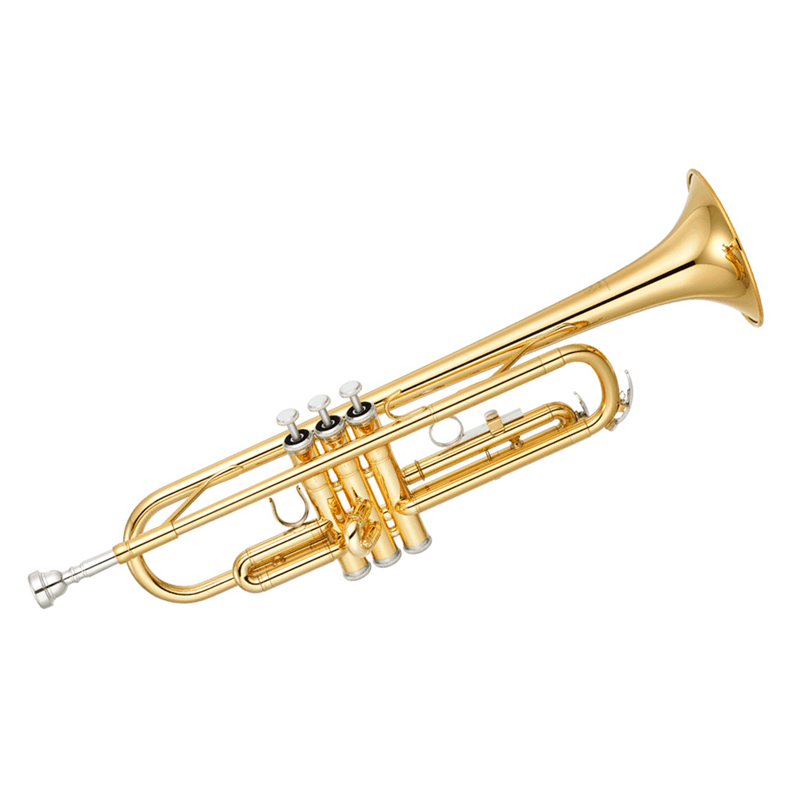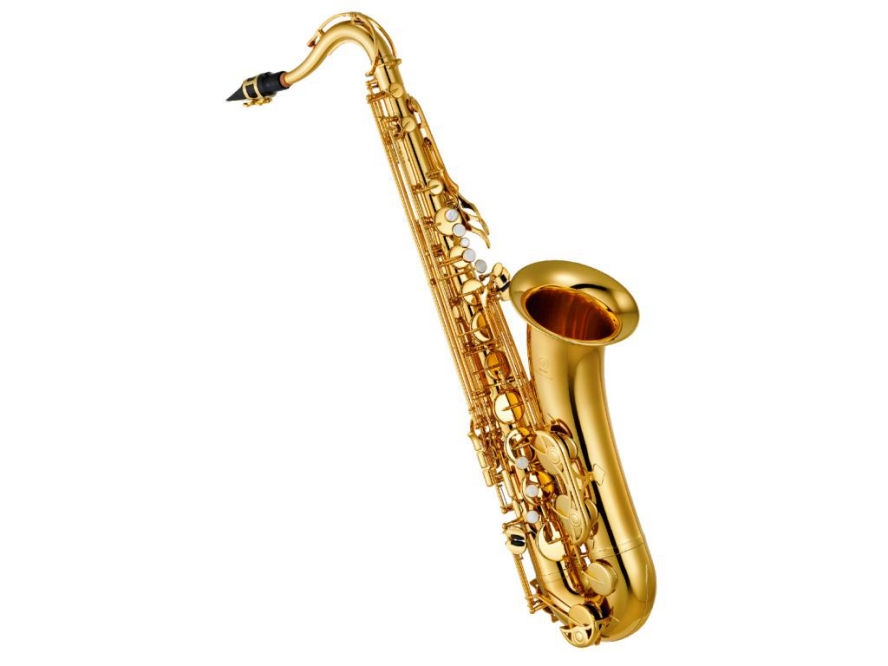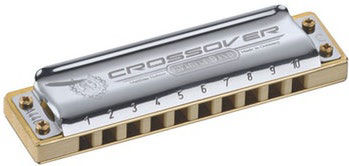Are you interested in learning to play a musical instrument and your inclination goes towards the wind instruments? A harmonica may be? Or a trumpet? It can be a Saxophone on your list. In this article we are going to compare these by exploring multiple factors that denote them their peculiar characteristics. Wind instruments are definitely a great choice if you want to play solo or even with a band.
We have been fascinated by the charm of these objects since long, not to mention their sound, shape and colors which has appealed us always. Who has never seen a saxophone with a brilliant finish glittering in the spotlight on the stage?
Wind instruments are of many types and can be classified into two big families: woodwinds and brass. The family name comes from the specific core material of the instrument, although, later in this article, we'll talk about such instruments that take characteristics of both families; e.g. a saxophone.
A brass instrument comprises of brass mainly, but the factors which specify each instrument's dominating category are their distinguishing features such as shape, element type that generates sound and the technique to use it.
Today we will analyze these three common wind instruments: trumpet, saxophone and harmonica. Let's have a closer look at three of them, one by one, to understand what assigns them their discrete characteristics and also to evaluate our preferences for the selection of any of these in our career as musicians.
While assessing these instruments prior presenting before you, I will take into consideration some particular aspects such as their portability, weight, sound extension, technique of use, as well as the possibility of finding compatible accessories for them.
Let's begin with the trumpet:

The cost of a trumpet varies from one hundred dollars to a few thousand dollars.This instrument isn't very big, that's why fits in a rigid briefcase and weighs around 1 kg. As far as its accessories are concerned, you may buy a device for it that would lower the emission of sound or to produce that typical effect of a muted trumpet.
For the daily maintenance of a trumpet, it is recommended to clean it at the end of each performance. It is provided with a small valve to drain saliva and the condensate which keeps accumulating inside it as we play.
Periodic maintenance involves disassembling the instrument, cleaning it and assembling it again, once all the elements are dried up. To keep the trumpet in good condition, you are required to apply a little grease to its pistons and the tuning pump.
Transportability of the trumpet: as it is a light weight instrument, therefore, it can be carried everywhere quite easily when folded in its briefcase.
A trumpet needs involvement of both of our hands to blow it. The technique to play this brass instrument demands you to place your lips against the device in a recommended position and exhale through it; pushing the air inside the mouthpiece will yield vibration. For successful emission of various notes, you need to work on both principles; i.e. on the shape of your mouth on the mouthpiece and the use of pistons. An important aspect to consider, in case of a trumpet, is that notes are produced by the vibration of your lips alongwith the assisstance of pistons, unlike other instruments such as saxophone or harmonica, where you do provide the air but - depending upon the keys you activate or the holes you blow in - it's actually the instrument that produces the notes.
Type of the sound emitted: the trumpet is a monophonic instrument that can produce only one note at a time. You cannot play chords on it.
Sound power: the volume - if used without any muting accessory - is sufficient to set the whole neighborhood in turmoil. The sound output can be increased by using either microphones or by turning the face of the instrument towards, let's say, a voice microphone. The musical extension of the trumpet can reach up to 3 octaves which is directly related with the skill of the performer; as mentioned above, the trumpet player needs to change its setting on the mouth every now and then to play varied height of notes. The trumpet is an instrument that makes use of all the semitones of the musical scale, thereby allowing to play in a chromatic way.
Instrument tonality: there are B flat trumpets which are very common but also in C, in F, in E flat and in D. Though we can play on all the keys - taking advantage of chromatic feature of this instrument - and therefore, possibly learn to use different musical scales, but it definitely requires certain degree of skill and a great deal of study.
The second wind instrument that we intend to explore is saxophone:

The cost of a saxophone starts at two hundred and fifty dollars and can hike upto a few thousand dollars. It is an instrument that fits in a rigid medium sized briefcase whereas its weight varies from approx.1 kg for a soprano to about 5 kg for a baritone.
Regarding accessories for this instrument, there ain't any compatible devices available for the muting purposes (the sound is emitted by instrument's whole body) but a silent bag; which is a casing that contains the instrument and limits the noise emission. A silent bag costs about 600 dollars.
Talk about its daily maintenance regime? A saxophone must be cleaned at the end of each performance. There are special brushes to clear the saliva and the condenses that are deposited in it. You can also use special rags to pass inside the body of the saxophone, starting from the part where you place the mouthpiece (neck) and taking them out from the side of the bell.
The periodic maintenance of saxophone is much more complex, as it is an instrument with different moving parts: springs, keys, pads and screws and all of which are subject to wearing down and corrosion. The saxophone is a delicate instrument that must be handled with care. Its small moving parts can bend easily or it may gent dents, all such situations may cause this instrument severe damage rendering it quite worthless. Contacting a professional is always a good practice for its appropriate maintenance.
Transportability of the saxophone: it may vary, depending upon the model; a soprano is comfortable in a briefcase whereas a baritone requires a larger suitcase.
The technique of playing the saxophone is to press the wooden reed - mounted on the mouthpiece - using lips and make it vibrate by blowing into it. As mentioned in the beginning of this article, the saxophone is made of brass but contains a wooden reed. The mouthpiece can be made of wood also. Prior selecting the note which you wish to perform, you are required to use the buttons so as to set the keys in action which open and close the holes present on the instrument body. For playing even saxophone, you need to engage your both hands.
Since the instrument may sustain some weight, it's necessary to equip yourself with special straps, sometimes even padded, to carry it closer to the body. Larger saxophones can also be placed on the floor.
Type of the sound emitted: the saxophone is also a monophonic instrument that can produce only one note at a time and does not support to play chords.
Sound power: a saxophone makes enough noise so, if you live in a condominium, it can be really annoying and unless you buy a silent bag, there is no possibility of lowering the sound. You may use microphones to amplify its sound or play it directly to a microphone.
The musical extension of the sax is about two and a half octaves, however the sharper sounds at the edge of the extension require more skill on part of the musician.
Instrument tonality: mainly used saxophone keys are E flat, which are called alto; B flat is called tenor and sopranos is termed as B flat also but it plays an octave above the tenor. Then there are the baritones, the bass, the sopranino and those in C key. As the sax is a chromatic instrument also, therefore, by studying the musical scales we can use it to play on all the keys.
The last wind instrument we are going to analyze here is the diatonic harmonica. The cost of a harmonica lies somewhere between 20 - 100 dollars; generally, a good model starts at 30 dollars.

Among accessories for this instrument we find the rack (neck support) to use when we want to play it without engaging hands. There are special microphones available also to amplify it to get particular 'Chicago' sound .
In context of its daily maintenance: pat it a little at the end of every performance and then beating it slightly onto the palm of your hand to eliminate any saliva residue (an xperienced harmonica player accumulates very little). You can wipe it with a cloth too.
Periodic maintenance is minimal, you can disassemble it easily to clean it from inside, but you have to be careful not to move or bend the reeds. A small file is used for tuning reeds and the tuning operation is not frequent.The harmonica is factory tuned already.
Harmonica transportability: this is really a small instrument weighing only a few tens of grams which lets you carry it even in your pocket.
The technique to play the diatonic harmonica: you get the notes by blowing and drawing in through its different holes. By applying a particular technique called 'bending' you may get some notes that are not even present on the instrument otherwise.
The diatonic harmonica is not a chromatic instrument, therefore, to play all semitones on a scale, one can use the techniques of bending and overbending. The lack of any notes, however, doesn't affect the usage of this instrument on all musical genres, as we may buy it in all keys and the cost is not much either. We will focus more on this aspect in the next lines.
One hand is suffice to play harmonica or you can even play it without using hands in case you mount it on a support (called also rack) like the one used to play it along with a guitar.
Type of sound emitted: As harmonica is a polyphonic instrument so it can play up to 10 notes at the same time (usually we don't play more than four at a time). With the harmonica we can play both single notes and chords. This aspect makes it beneficial not only in solos, but also to accompany someone during performance.
Sound power: the blues harp has a low volume and can be played in a condominium. To amplify it, we use microphones connected to either guitar amplifiers or generic ones. The musical extension of the harmonica is 3 octaves, and we know already that not all the semitones are part of it.
Instrument tonality: harmonica exists in all the twelve keys as well as special keys such as bass or minor ones. There are various options to serve the purpose. Today you can even buy harps where you can decide which notes to be emitted by each hole through aspirating and blowing in; just send the note layout to the factory and you can get a customized instrument. A very important quality of harmonica once you learn to play it, is that if you want to play in another key, what you need to do is; pick any different key isntrument and play exactly the same holes you are used to play and that's it.
In other words, if it is true that this instrument is not chromatic, it is also true that we can easily switch from one key to another without having to play too many different musical scales.
To sum up everything we have discussed so far, choosing a wind instrument involves evaluating various aspects: cost, maintenance, size, and not to mention certain type of study but the possibility of its use in different musical contexts. I hope to have transferred some useful information to you and in the end I just wish you a lot of good music!